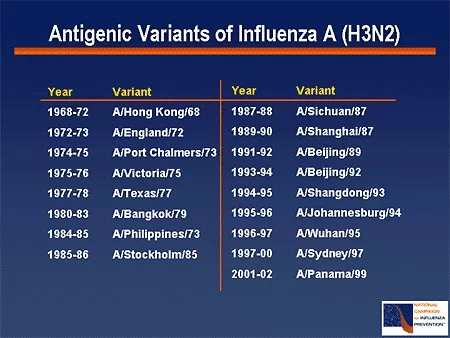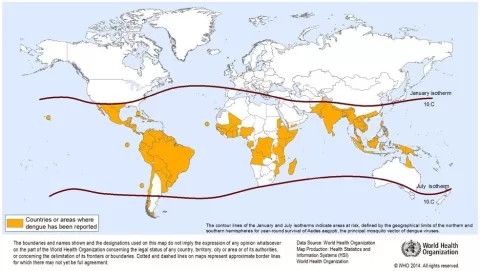The H3N2 flu strain has emerged as a significant concern for health officials as we approach the upcoming respiratory virus season. Recent data highlights a notable mismatch between the seasonal flu vaccine and the H3N2 subclade K, which has been gaining traction in countries like Japan and the United Kingdom. Experts from the CDC and other health organizations stress the necessity for enhanced flu surveillance to navigate this uncertainty effectively. As the flu vaccine’s effectiveness may be impacted by this subclade, understanding its dynamics becomes crucial for public health. With the potential for an uptick in flu cases, staying informed about the evolving landscape of the H3N2 strain is essential for ensuring community health this season.
As the world braces for the flu season, the H3N2 variant raises flags among health professionals. This influenza A strain, particularly the subclade known as K, has shown promising prevalence overseas, prompting questions about its potential impact in North America. The seasonal flu vaccine, typically tailored to combat the most prevalent strains, may face challenges due to this emerging variant, suggesting a need for timely CDC flu surveillance. With discussions about the effectiveness of various influenza vaccines gaining traction, it’s essential to monitor these developments as we prep for a potentially challenging respiratory virus season. Consequently, community awareness and vaccination remain vital tools for mitigating the effects of this unpredictable flu strain.
Understanding the H3N2 Flu Strain and Its Impact
The H3N2 flu strain, particularly the emerging subclade K variant, poses potential challenges this flu season as initial data shows it might outpace the existing seasonal influenza vaccine. This strain has been linked to increased circulation of the virus in regions such as the UK and Japan, where it accounted for a staggering 90% of flu samples. Understanding this strain’s dynamics is crucial for public health officials as it can influence the spread of influenza and the effectiveness of flu vaccines worldwide.
Experts warn that since the CDC has not been reporting regular surveillance data, the uncertainty around H3N2’s dominance could lead to an underestimation of flu cases. Without timely data, it becomes challenging to assess vaccine effectiveness against this particular strain, making enhanced surveillance even more critical during the respiratory virus season. Clinicians and public health authorities must remain vigilant in monitoring this strain’s presence and the overall flu landscape to respond effectively.
The Role of Seasonal Flu Vaccines
Seasonal flu vaccines, including those formulated to target H3N2, play a vital role in mitigating the potential impact of influenza outbreaks. Vaccination offers critical protection, especially for vulnerable populations, including young children and the elderly. Early reports from the UK indicate that the current vaccine shows a 70% to 75% effectiveness rate in preventing severe illnesses among children aged 2 to 17, suggesting that vaccines still provide substantial protection even amidst concerns over strain mismatches.
However, the effectiveness of flu vaccines has historically fluctuated based on circulating strains, as seen with the current subclade K H3N2 strain. It is essential for public health messaging to emphasize the importance of vaccination, as even in seasons with lower efficacy, the flu vaccine can reduce the severity of illness and hospitalizations. Municipal health departments must continue to promote flu vaccine uptake to safeguard community health against heightened influenza risks.
CDC Surveillance and Its Importance in Flu Tracking
The CDC plays a pivotal role in monitoring influenza activity, collecting and analyzing data that informs public health decisions. With the current lack of national surveillance updates, experts express concern about the ability to track the flu’s circulation effectively. This data not only helps to identify which strains are prevalent but also assists in formulating the next year’s vaccines, ensuring they match the circulating virus as closely as possible.
In addition, effective influenza surveillance enables timely responses to emerging strains like H3N2 subclade K, which may impact vaccine effectiveness. Accurate surveillance data allows healthcare professionals to adjust their recommendations and strengthen public messaging to encourage vaccination during the respiratory virus season. Failure to maintain robust surveillance could lead to quick surges in flu cases, particularly if a dominant strain goes unmonitored.
Vaccine Effectiveness and Public Health Strategies
The effectiveness of the influenza vaccine significantly influences public health strategy, especially during dominant seasons. Recent findings from the UK indicate that the current vaccine is showing promise in preventing hospital attendance, with effectiveness between 30% to 40% in adults. Such data highlights the crucial function of flu vaccines in protecting public health, even when facing strains like H3N2 that may exhibit higher mutation rates capable of evading immunity.
Despite concerns regarding mismatched strains, health experts recommend vaccination, as it still plays a crucial role in reducing severe illness cases. There is widespread agreement that as H3N2 dominates this year’s flu season, continued public outreach emphasizing the vaccine’s importance is essential. By educating communities about the ongoing evolution of the influenza virus, public health officials can encourage individuals to get vaccinated and maintain proactive health measures.
The Importance of Enhancing Surveillance in North America
As highlighted by recent research, enhancing surveillance for influenza in North America is critical given the current uncertainties surrounding the H3N2 vaccine strain. Real-time data on flu activity can inform public health responses and vaccination strategies, allowing officials to make evidence-based decisions. The need for improved surveillance systems has become increasingly urgent, particularly as H3N2 shows signs of early dominance in the Northern Hemisphere.
Without adequate surveillance, the impact of respiratory viruses could escalate, leading to unnecessary hospitalizations and strain on healthcare resources. As the flu season progresses, public health agencies must prioritize comprehensive tracking of influenza cases, as well as seasonal vaccine effectiveness. Investments in surveillance not only bolster responses to flu outbreaks but also enhance overall public health preparedness.
What to Expect During This Respiratory Virus Season
As we approach the peak of the respiratory virus season, experts emphasize unpredictability, particularly due to the current onset of the H3N2 strain. Given the mismatch between circulating strains and the seasonal flu vaccine, communities must prepare for potentially heightened flu activity. This unpredictability necessitates continuous monitoring and adaptation of public health strategies to mitigate flu outbreaks.
Monitoring the situation closely allows health departments to provide timely updates and recommendations to the public regarding the flu vaccine and other preventive measures. Furthermore, understanding the trends of influenza in parallel with other respiratory viruses will be key as health systems brace for increased patient loads as flu activity ramps up.
Understanding Antiviral Responses to Influenza
The response to antiviral treatments during influenza outbreaks is a crucial aspect of managing infection rates, especially concerning strains like H3N2 subclade K. Fortunately, early reports suggest that the mutations associated with this strain do not impact the effectiveness of antiviral medications. Understanding how these medications interact with circulating viruses can inform treatment protocols during the flu season.
Timely antiviral treatment can significantly reduce the severity of flu symptoms and the duration of illness, underscoring the importance of early diagnosis. Public health professionals must work in coordination with healthcare providers to ensure that patients have access to antiviral treatments, particularly during peaks in flu activity when hospitals may become overwhelmed.
The Role of Health Communication during Flu Season
Effective health communication is vital during the flu season, particularly in light of emerging strains like H3N2 subclade K and their potential impact on public health. Engaging communities through targeted messaging about the importance of vaccination, monitoring flu symptoms, and proper health practices can lead to better outcomes. Clear communication from health authorities can empower individuals to take preventive measures and seek care promptly.
Moreover, addressing vaccine hesitancy through educational campaigns can encourage higher immunization rates across populations. Collaborating with local health organizations and utilizing multiple channels of communication ensures that critical information reaches diverse audience segments, optimizing community preparedness for the health challenges presented by influenza.
Examining Historical Trends in Influenza Strains
Understanding historical trends in influenza strains is essential to predict potential challenges in upcoming seasons. Notably, H3N2 has been a recurrent strain in the human population since 1968, contributing to higher rates of illness during dominance seasons. Past data illustrates how the virus can change over time, evading immunity and leading to varying vaccine effectiveness across different seasons.
Historically, flu seasons dominated by H3N2 have been shown to result in more severe outcomes compared to those with H1N1 predominance. Learning from past trends allows public health officials to tailor vaccination strategies and public health campaigns. This historical context sets the stage for anticipating challenges and fostering effective responses to influenza outbreaks.
Frequently Asked Questions
What is the H3N2 flu strain and why is it important to monitor its activity?
The H3N2 flu strain is a subtype of the influenza A virus that has been circulating among humans since 1968. Monitoring its activity is crucial because it can evolve each season, impacting vaccine effectiveness and public health. Recent reports highlight that the H3N2 subclade K has emerged as a dominant strain during the respiratory virus season, making surveillance essential for timely responses.
How does the seasonal flu vaccine relate to the H3N2 subclade K strain?
The seasonal flu vaccine is formulated based on circulating strains, including H3N2 subclade K. According to recent studies, there has been a mismatch between this year’s vaccine and the H3N2 subclade K strain, which could result in reduced vaccine effectiveness. This underscores the importance of ongoing surveillance to adapt the vaccine for future seasons.
Why is CDC flu surveillance critical during the respiratory virus season?
CDC flu surveillance is vital because it tracks circulating strains of the flu virus, including H3N2. This data helps determine vaccine effectiveness and guides public health decisions. The recent absence of CDC reports has raised concerns about the unmonitored spread of the H3N2 strain and potential underreported influenza activity.
What is known about the effectiveness of the influenza vaccine against the H3N2 subclade K?
Early data suggests that the influenza vaccine may offer about 30% to 40% effectiveness against H3N2 subclade K in adults and 70% to 75% effectiveness in children for preventing hospital attendance. However, effectiveness can vary, especially as the season progresses and virus strains evolve.
How can the H3N2 flu strain affect vulnerable populations?
The H3N2 flu strain is known for causing more severe illness, particularly in older adults. This is due to potential lower vaccine effectiveness in these populations and the strain’s capability to evade immunity. Monitoring H3N2 activity and vaccination uptake is critical in protecting vulnerable groups during the flu season.
What should individuals do to protect themselves from the H3N2 flu strain this season?
To protect against the H3N2 flu strain, individuals are encouraged to get the seasonal flu vaccine, practice good hygiene, and stay informed about flu activity in their area. Even with a mismatch in strains, the vaccine provides some protection and significantly reduces the risk of severe illness.
How does the emergence of the H3N2 subclade K strain impact future vaccine formulations?
The emergence of the H3N2 subclade K strain may influence future vaccine formulations as experts need to consider the circulating viruses when selecting strains for next season’s vaccine. Continuous surveillance is essential to adapt to these changes and improve vaccine effectiveness.
What are experts predicting for the upcoming flu season regarding the H3N2 strain?
Experts predict that the H3N2 strain will likely be the dominant strain this flu season, although there’s continued uncertainty due to the lack of CDC surveillance data. Close monitoring of flu activity will be crucial to understand the overall impact and guide public health recommendations.
| Key Point | Details |
|---|---|
| Mismatch of Vaccine Strain | Current seasonal vaccine is mismatched with the emerging H3N2 subclade K strain. |
| Importance of Surveillance | Increased surveillance is encouraged in North America due to the potential for dominance of the H3N2 strain. |
| Emergence of H3N2 subclade K | H3N2 subclade K represented in 90% of flu samples from the UK and Japan. |
| No Pandemic Risk | Experts believe the H3N2 subclade K represents a major drift, not a shift, in the virus. |
| Vaccine Effectiveness Reports | Preliminary data suggest vaccine effectiveness is 70-75% in children and 30-40% in adults. |
Summary
The H3N2 flu strain, specifically the subclade K variant, has emerged with significant concerns surrounding its mismatch with current vaccines. As reports indicate a predominant presence of this strain in early flu samples, it highlights the urgent need for enhanced surveillance measures. Experts advise that while the H3N2 strain is evolving, its risk of leading to a pandemic remains low. However, low vaccine effectiveness could lead to increased flu cases this season, making vaccination essential for reducing severe illness risk. Continuous monitoring will be crucial for understanding the potential impact of H3N2 during the upcoming flu season.
The content provided on this blog (e.g., symptom descriptions, health tips, or general advice) is for informational purposes only and is not a substitute for professional medical advice, diagnosis, or treatment. Always seek the guidance of your physician or other qualified healthcare provider with any questions you may have regarding a medical condition. Never disregard professional medical advice or delay seeking it because of something you have read on this website. If you believe you may have a medical emergency, call your doctor or emergency services immediately. Reliance on any information provided by this blog is solely at your own risk.







